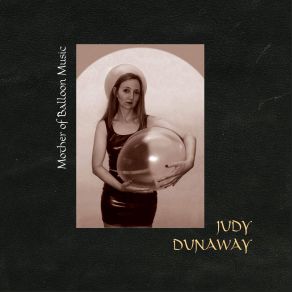Mother of Balloon Music
Download links and information about Mother of Balloon Music by Flux Quartet, Tom Chiu, Judy Dunaway. This album was released in 2006 and it belongs to Rock, Songwriter/Lyricist genres. It contains 8 tracks with total duration of 55:47 minutes.

|
|
|---|---|
| Artist: | Flux Quartet, Tom Chiu, Judy Dunaway |
| Release date: | 2006 |
| Genre: | Rock, Songwriter/Lyricist |
| Tracks: | 8 |
| Duration: | 55:47 |
| Buy it NOW at: | |
| Buy on iTunes $9.99 | |
Tracks
[Edit]| No. | Title | Length |
|---|---|---|
| 1. | Etude No. 1 | 9:13 |
| 2. | For Balloon and String Quartet: I. — | 5:22 |
| 3. | For Balloon and String Quartet: II. — | 8:41 |
| 4. | For Balloon and String Quartet: III. — | 7:23 |
| 5. | The Balloon Factory | 3:10 |
| 6. | For Bass Koto With Balloons (featuring Ryuko Mizutani) | 11:34 |
| 7. | The Rubber Forest | 4:42 |
| 8. | Etude No. 2 | 5:42 |
Details
[Edit]For those with a sensitivity to sounds such as the scraping of a blackboard with chalk, or of pulling at the outside skin of a balloon with the palm of one's hand, Judy Dunaway's Mother of Balloon Music on Innova will be like a prescription for a migraine headache — not for the medicine, but for the headache. Initially inspired by a whimsical 1972 effort by Anthony Braxton entitled "Composition 25," which calls for 250 balloons, composer Dunaway has taken the lowly party favor and created an entire musical aesthetic around it. Dunaway applies a much wider range of performance applications to the balloon than most would even conceive, such as using balloons in place of the bridges of a koto, or in chamber music combinations. Through tape recording, digital sampling, and the use of enormously large balloons, Dunaway seems to have conquered the short decay time of a balloon, although she does not try to overcome its unpredictability in terms of pitch and randomness of output. Unlike Gershon Kingsley, who once demonstrated to concert entrepreneur Sol Hurok the musical viability of an early synthesizer by playing "Mein Yiddische Mama" on it, Dunaway will never be able to perform a familiar melody by request; her instrument will not permit it.
For those who can withstand the sounds as described above, it is clear that Dunaway takes what she is doing very seriously, and some of the sounds are unique — even a little scary, such as the slowly rising quartet of balloon sounds heard in her "For Balloon and String Quartet: Third Movement." In the "Etude No. 1" and "Etude No. 2 for Balloon and Violin," the timbre and rapid figuration of the balloon leaking out air through its nozzle does resemble the sound of a player like Anthony Braxton jamming on the sopranino saxophone or some other very high, reedy instrument. Reading Dunaway's notes, you get the sense that she has thought this whole thing through in detail, but there is a Wicca-esque quality to her thinking that gives one pause, as she ties her balloon music into ruminations about world environmental concerns and gender specificity. Moreover, Dunaway only takes the parts of her historiography on balloon music that support her thesis, and leaves the rest behind without much consideration. Dunaway states that Charlotte Moorman used a balloon pop in her 1963 performance of John Cage's "26'.1.1499 for String Player," but does not indicate how Cage felt about such realizations as those done by Moorman and Nam June Paik; Cage did not recognize them as legitimate.
Judy Dunaway has chosen an uphill battle indeed; it's hard to say whether future generations will hold her work in the same regard that one reserves for other mavericks such as Harry Partch, Edgard Varèse, or even Lucia Dlugoszewski. At the same time, back in the '60s Alan Hovhaness was ridiculed for using taped whale sounds in his orchestral piece "And God Created Great Whales," an idea that seems anything but "ridiculous" four decades hence, and Hovhaness was also motivated by environmental concerns that remain so. Time will tell if Dunaway is on the right track, but for now Mother of Balloon Music seems a bit too frivolous, yet is clearly too serious to be a true "party record" in the sense that such recordings are usually employed.